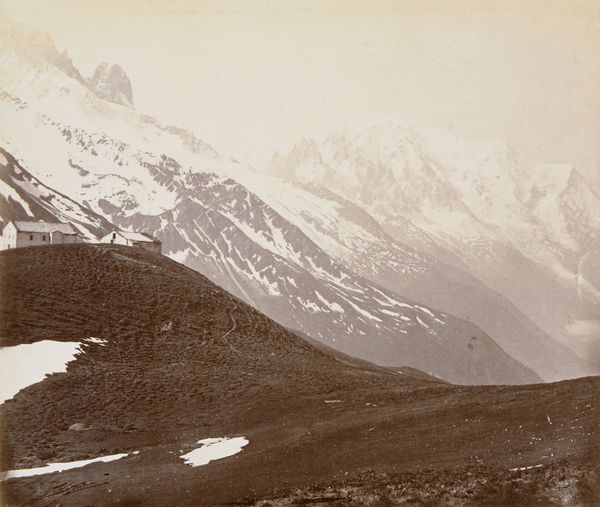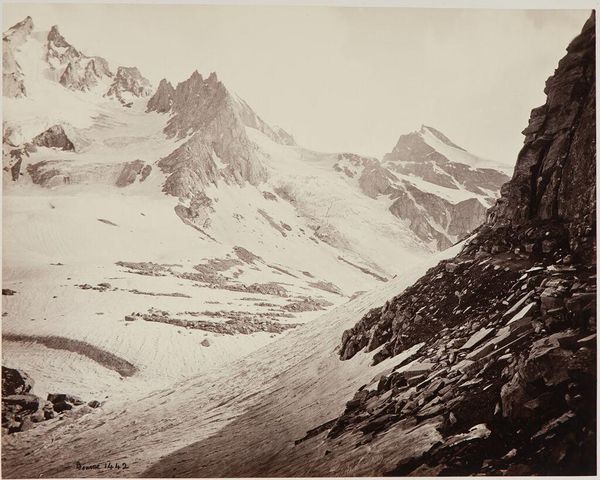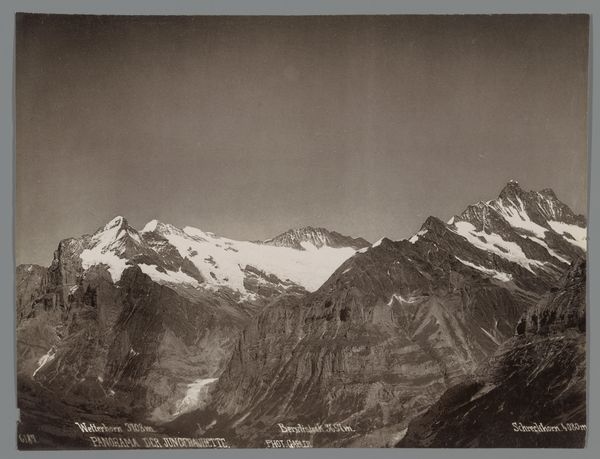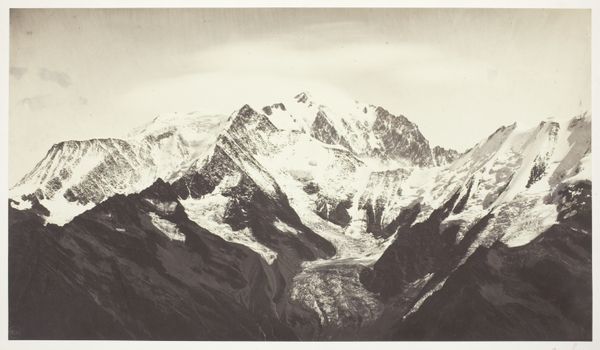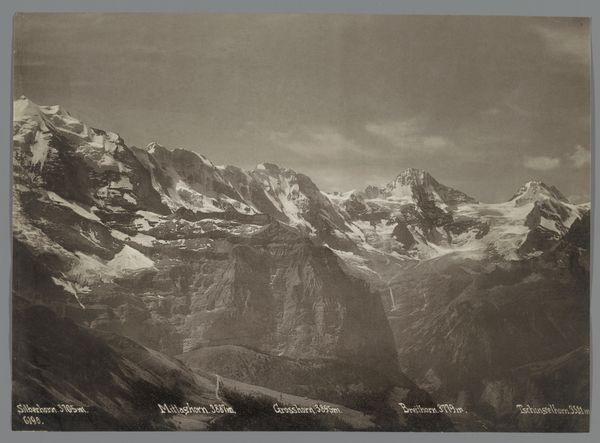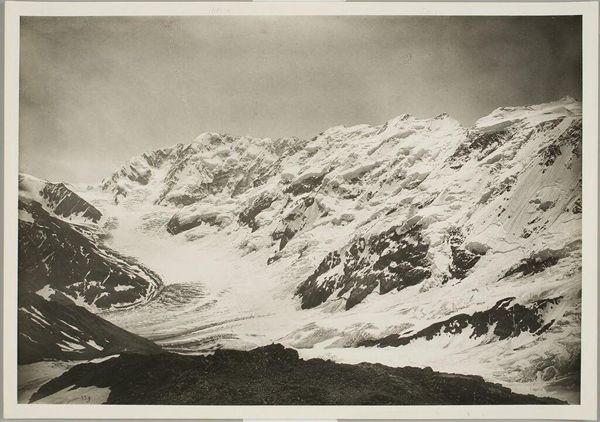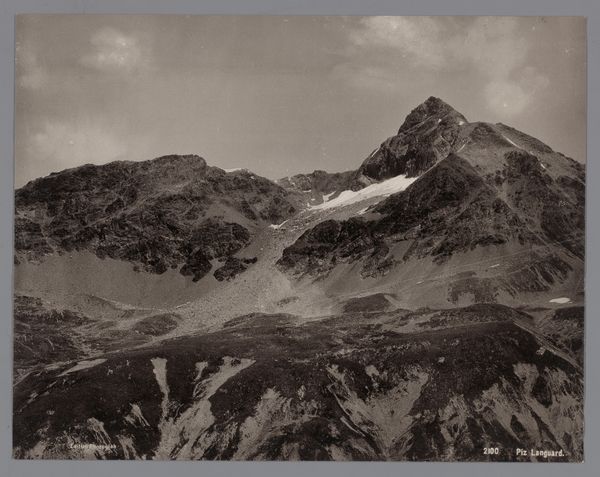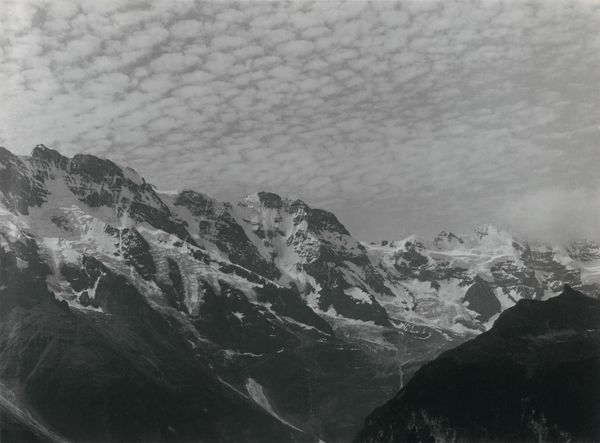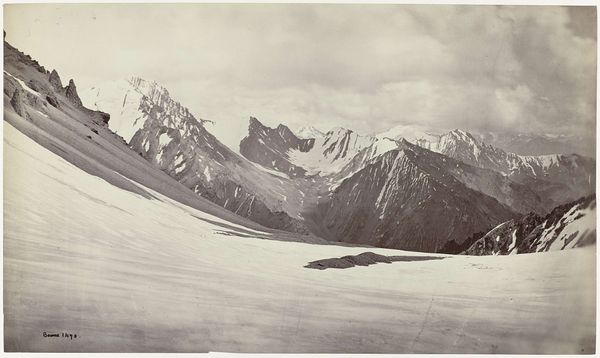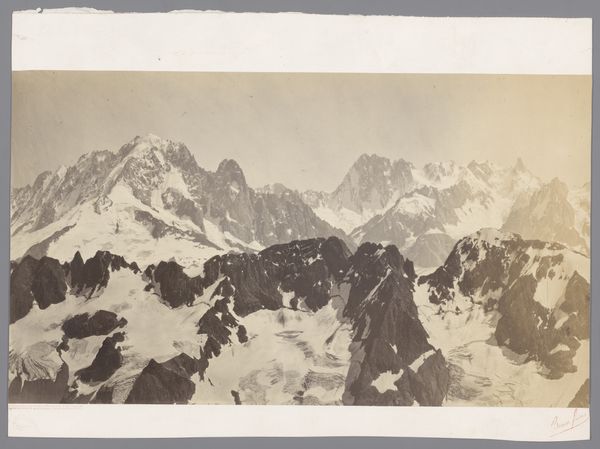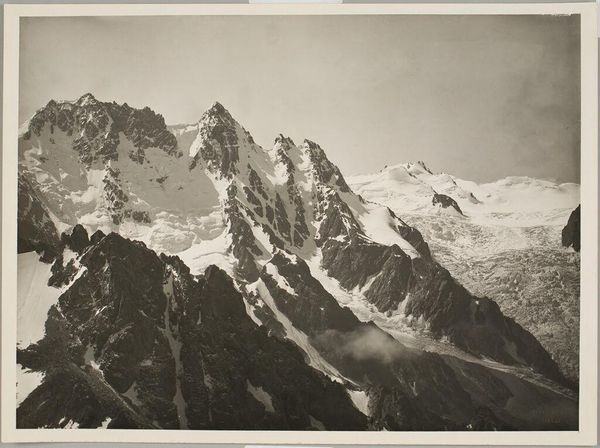
Schweiz, Kanton Wallis, Rhonegletscher (Switzerland, Canton of Valais, Rhône Glacier) c. 1859 - 1862
0:00
0:00
Dimensions: image: 29.2 × 44.3 cm (11 1/2 × 17 7/16 in.) mount: 45.2 × 58.6 cm (17 13/16 × 23 1/16 in.)
Copyright: National Gallery of Art: CC0 1.0
Editor: This is “Schweiz, Kanton Wallis, Rhonegletscher” or "Switzerland, Canton of Valais, Rhone Glacier," a gelatin-silver print by Bisson Frères, dating from around 1859 to 1862. It has a monumental feel – it makes you feel very small. What do you see in this piece? Curator: What strikes me is how this photograph, seemingly a straightforward landscape, also acts as a potent commentary on humanity's relationship with nature, particularly in the face of environmental change. Consider the socio-political context: this image was created during a period of intense industrialization and expansion. Editor: How does that tie in? Curator: Well, these early photographs of glaciers served not only as scientific documents, recording their scale and majesty, but also implicitly as warnings. They capture a moment in time, a fragile beauty threatened by human activity, even then. Can we consider landscape photography to be a form of early environmental activism, subtly challenging dominant power structures and advocating for a more sustainable approach? Editor: That’s a powerful idea! I hadn’t thought about it in terms of activism. It does make you think about our role in preserving these landscapes. Curator: Exactly! It prompts us to question how visual culture shapes our understanding of environmental issues and, hopefully, inspires action. It is a fusion of science and politics. Editor: This makes me think about how relevant it is today! I came to this piece thinking simply about aesthetic and technical skill, but now I see this photo as something deeply ingrained with social commentary and awareness. Curator: Precisely. And it is these dialogues that enrich our understanding of art's role within broader cultural narratives.
Comments
No comments
Be the first to comment and join the conversation on the ultimate creative platform.
